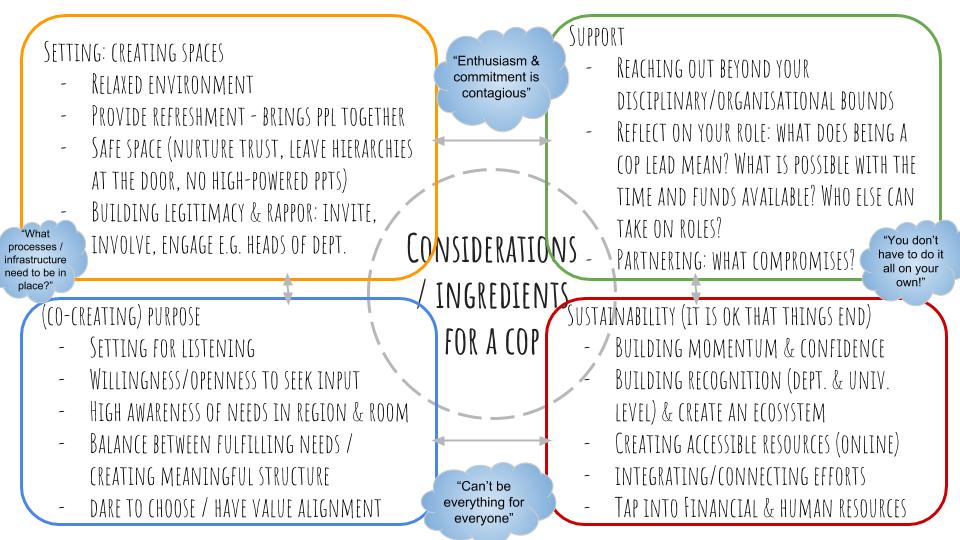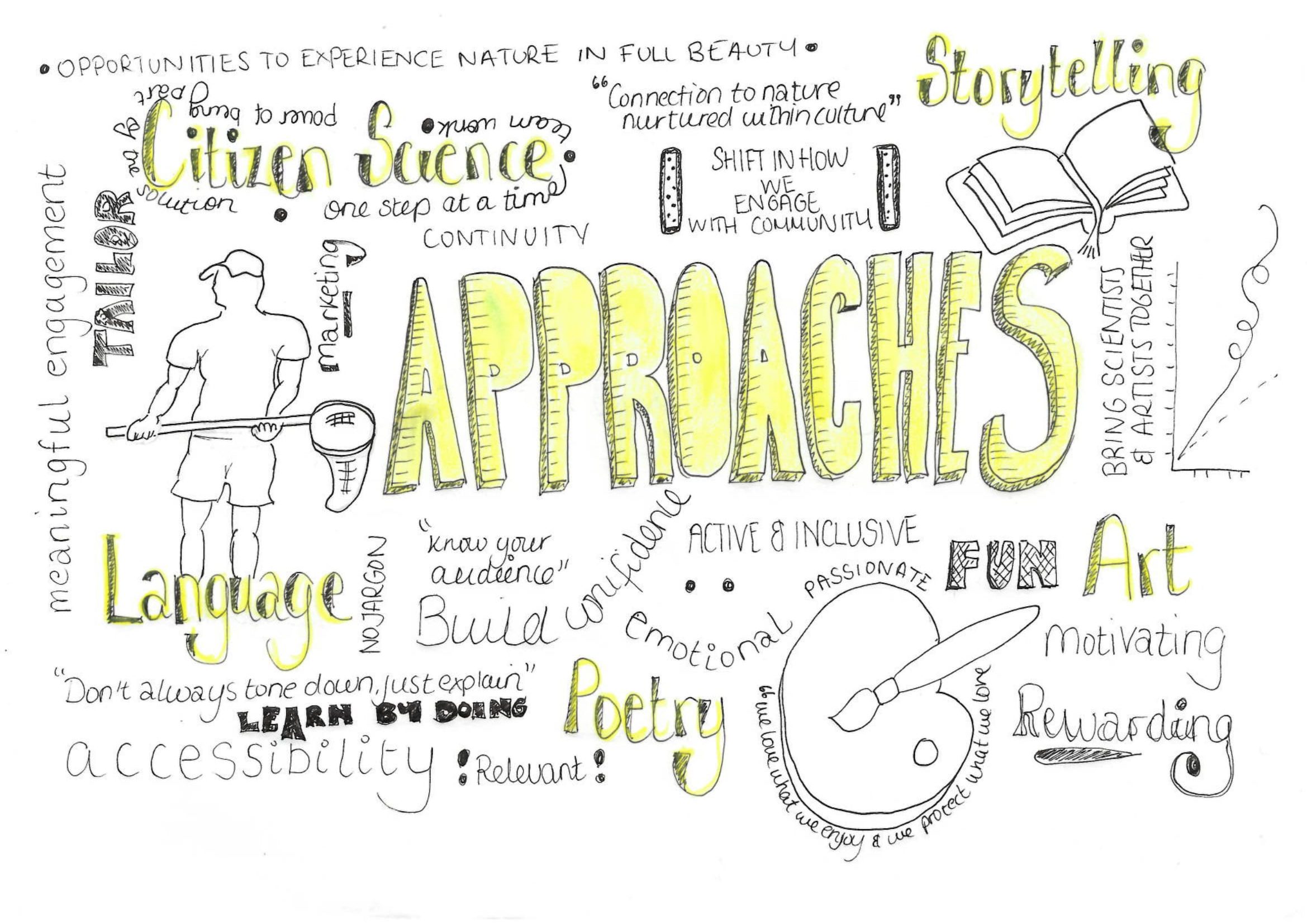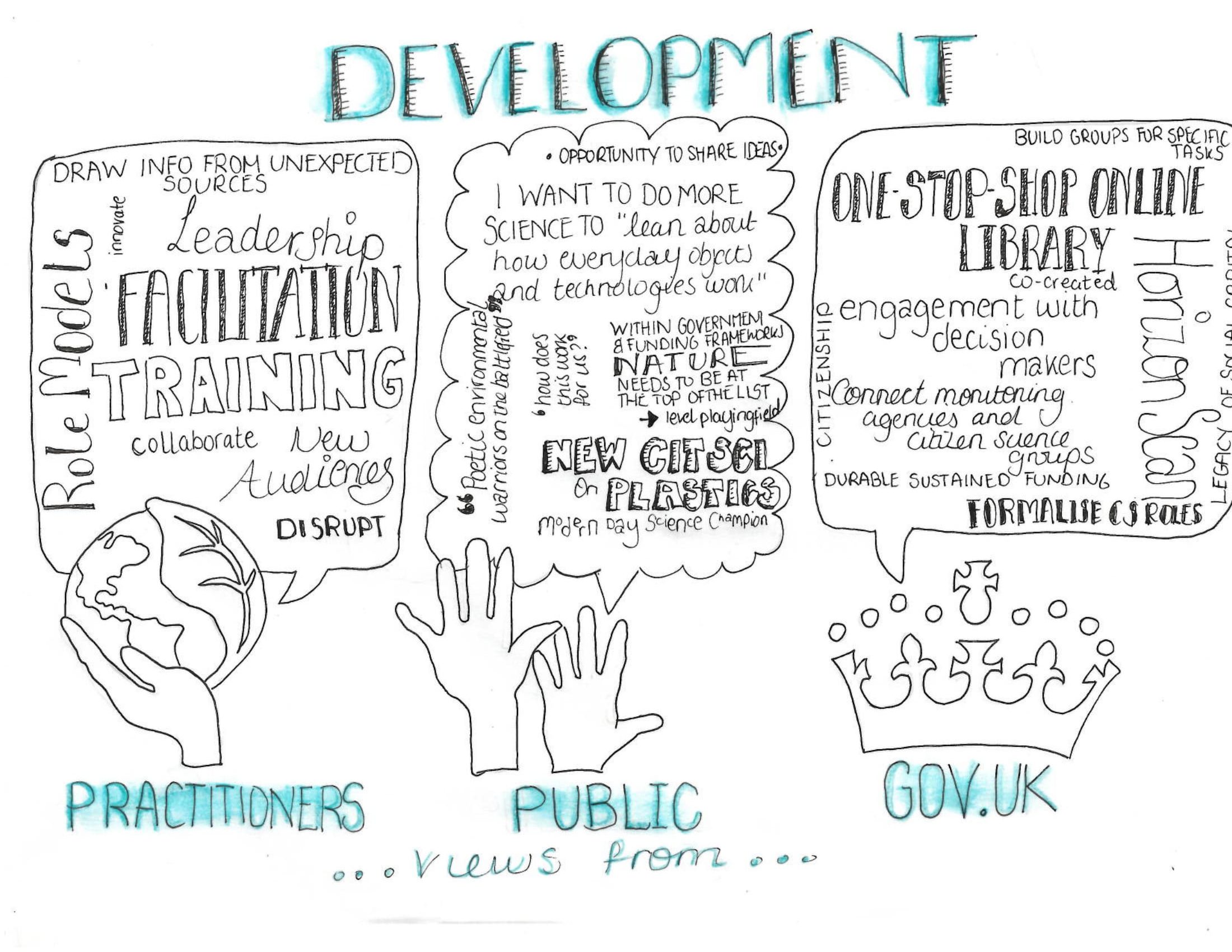Throughout the course of this OPENER programme we have not only been conducting our own community events, training and capacity building exercises, but we have been investigating the current status quo in public engagement with the natural world.
In doing so, we have been looking into current opinions about the importance of bringing communities together, the most effective mechanisms for opening up science and where developments could be made in the field through an organic process of:
- Creating blogs: As you are here, you have clearly found our blogs page- hurrah! Here you will find not just your typical written commentaries, but video animations, poetry and art work all exploring what it is to open up science. We have been seeking the opinions of professionals in the field of public engagement, NERC academics, policy makers, teachers and the public.
- Attending external meetings: One particular meeting organised by the UK Environmental Observation Framework’s (UKEOF) Citizen Science Working Group provided a rich source of views from representatives working for statutory bodies.
- Compiling resources: We have just finished adding to this list of the top reports, projects and links used by the citizen science and wider public engagement community. From videos explaining the scope of citizen science, through to useful case studies, following latest news, to planning your own project. We have combined our favourites with those identified in the UKEOF workshops and those used in our training module to get you started (or deepen your journey), into the current citizen science landscape.
As later blogs will explore findings from the community work the OPENER team have been conducting this year, in this blog, I will broadly look to what’s going on in the wider community to review our current understanding of the field. Our team members, together with other colleagues across disciplines, provide a rich source to draw from. You will find all of the information in much more detail in the links I provide, but to give you a snapshot of some of the lessons we have learnt, I will endeavour to pick out some key words which I think summarise each of the themes we explore.
One of the biggest lessons I have learnt throughout the OPENER project is that creative approaches are often the most engaging way of getting a message across- after all a “picture paints a thousand words”. Therefore, at the start of each section you will find a visual representation summarising the findings. Apologies if the art isn’t quite professional level- I’m a scientist trying to draw!
Bringing Communities Together

For the first of my blog posts, I did a little research into what Communities of Practice mean to people around the world. I discovered that:
‘Communities of practice are groups of people who share a concern or a passion for something they do and learn how to do it better as they interact regularly.’ (Wenger Trayner)
There are a few key criteria that gel CoPs together and I’ve selected a few and sketched them around my community worktable above.
In visiting the European Citizen Science Association conference in Switzerland earlier this year, my colleague Muki reflected on the types of communities he saw emerging in the field of public engagement specifically. He found that there are many already in existence but they tend to vary in the size of community, the level at which they adhere to formal practices (comparing for example a long established consortium at the UN meeting and new ECSA community) and how a small number of people overlap in the citizen science and wider public engagement (e.g. museum community) CoPs. He raised an interesting question over the level of equity in CoPs driven by the amount of funding to support members.
While there were many theoretical representations of what CoPs were, our team members Cindy and Gitte who are evaluating the OPENER project wanted to take this one stage further and examine what made a successful CoP for community science in the UK. Check out their diagram below for a taster of what is to come in their upcoming blog on the programme evaluation.

What Approaches Appear to Work

Thinking about the role of language, I found that it was essential to avoid jargon while at the same time not ‘dumb down’ science as young participants can be inspired once they understand more technical terms. Providing assurance to the audience to avoid anxiety and build trust while avoiding language that may be misinterpreted are all important points to consider. Finally, words may not be the most effective way to communicate, many people found learning by doing more stimulating.
Continuing along this theme, creative means in science communication can be particularly effective. We had a series of blog posts which used art to convey scientific messages. NERC scientist, Ed worked closely with Nicola Davies, a children’s author and poet climate visualisations in the form of ‘warming strips’ and a poetic narration of a glacial ice melt animation. In the latest post we saw talented PhD student Louise create a moving masterpiece with her summary of her journey into Sci Art. Pret-ty impressive stuff.
Poetry and emotional connections could be exceedingly powerful means to get messages across. Judy, our pioneering community leader (sitting on the Defra Civil Society Partnership Group and Chair of the Black Environment Network) eloquently suggested that ‘Science as a rulebook of fixed formulas and data kills off all the sense of fascination and adventure’ after musing on her conversation with Nobel Prize winner, Sir John Vane:
‘The real scientists are those who are interested in experimentation, and in new frontiers. They are like passionate poets, willing to leap off cliff edges, taking a risk to journey into the unknown to bring back something new and beautiful. They travel with excitement, observing and discovering aspects of our world that can transform the entire way we see and live life. True science is pure magic!’
From our interactions with other groups in the NERC Engaging Environments call we have learnt about the value in listening workshops and how storytelling can bring a subject to life.
Last but not least, the value of citizen science, or the active involvement of people in the scientific process, has been brought into the limelight. As my colleague Erinma put it ‘citizen science enables people to know the world in a different way’. In her blog about her daughter’s exploration into the world of science through laundry, Toos wrote about the need for working in a team, taking things step by step and empowering people to be part of the solution. We heard from young citizen scientists who said that they think that citizen science is “learning new things about the world”, is “practical” and they “find out about creatures”. One student Mia said:
“You don’t get many women scientists and I think that this is important. She [Marie Curie] became noticed for her work and this shows her to be powerful. It makes me feel powerful too, that I can be like her”
Areas for development

From the blogs and meetings we have assimilated a collection of views on the gaps and our hopes and vision for the future of public engagement in the natural world.
The statutory sector:
As mentioned previously, a series of professionals came together from UKEOF working group to explore what resources currently existed for civil servants interested in taking a citizen science approach. Their key desires were:
- A one-stop online library of national and international resources (oh good, we have made a start in compiling this- perhaps add to others).
- Scoping of future needs and opportunities for utilising citizen science to answer evidence requirements and monitoring needs in government. They suggested that horizon scanning was key and a list of statutory ‘challenges’ that CS could present solutions for would be helpful.
- For further engagement of practitioners with decision makers (and vice versa). While some citizen science practitioners were engaging with the statutory sector, there was a desire for this to happen more frequently. An understanding of costs/benefits for incorporating citizen science into official monitoring was also deemed important.
- To further embed citizen science in organisations and ensure that best practice is being carried out, delegates suggested that citizen science roles should be formalised in organisations so that people can champion the cause, broker relationships, be a fountain of knowledge and support high quality participatory approaches across sectors.
- To connect monitoring agencies and citizen science groups. The approach above may help but we need to consider how we make it easy to participate.
- A vision for: Durable and sustained funding to be provided; the concept of citizenship to become more pervasive; groups to be built for specific tasks e.g hackathons; social capital built during citizen science activities had a legacy
The public:
One of the teachers that we have been working closely with, suggested that her students:
- Want to do more science “to learn about how everyday objects and technologies work” i.e. focusing on science that is relevant to society
- If they were to design the next citizen science project it would either focus on plastic pollution, mammals or humans
Other community leaders have suggested that nature is by no means at the top of many politicians priority lists and this needs to change. Also there are limited opportunities for non- typical recorders to engage with citizen science, approaches need to be made more inclusive and relevant to a diverse array of audiences. Modern day science heroes can help inspire people. Interviews with students and members of the public at one of the OPENER events suggested that having the opportunity to share ideas is very valuable and that these types of gatherings create a level playing field for participation.
Practitioners:
From the blogs and discussion with colleagues who are involved in the design and delivery of citizen science projects, they felt that:
- Leadership training was essential so that there was not just a one-way flow of information but that people were actively involved in community building and empowered to conduct their own community science with other like-minded individuals.
- Training in citizen science, learning about its diversity and scope could be beneficial to early career researchers. It is essential to balance the level of information provided making sure that the module is not too overbearing.
- Being there to facilitate community interactions was as important as doing engagement. There should be more provision for this.
- Reaching new audiences is essential. It should not always be the usual suspects conducting the community science and citizen science should be more inclusive. This means a different approach often needs to be taken for this to be effective- what’s in it for me? Also, different mediums such as the digital realm (e.g. Podcasts and social media) can reach certain audiences more than others.
- At the centre of this we should not just be thinking about what we, as a species, need from environmental protection, but what other species need.
- Role models can be very powerful means of inspiring action. There are currently few (living) citizen scientists with public profiles and this needs to change.
- Information from unexpected sources (such as comments from citizen scientists after submitting a survey) can be helpful for evaluating projects and deciding on how we can improve as a community.
As mentioned previously, more learning from the engagement events, training, evaluation and community building elements of this project will be summarised soon. But let me give you a taster of the five themes which the leadership team believe have defined OPENERs community of practice as I think that these nicely summarise what could be the next steps for our growing group of passionate public engagement advocates:
- Disruption & Risk Taking
- Communication & Networking
- Collaboration & Sharing
- Innovation & Horizon Scanning
- Championing & Advocacy
I’ll leave you to ponder on these thoughts summarising our findings over the last year and as ever, we’d love to hear your views.
We hope that these activities are only the start of things to come for the wider public engagement community…
